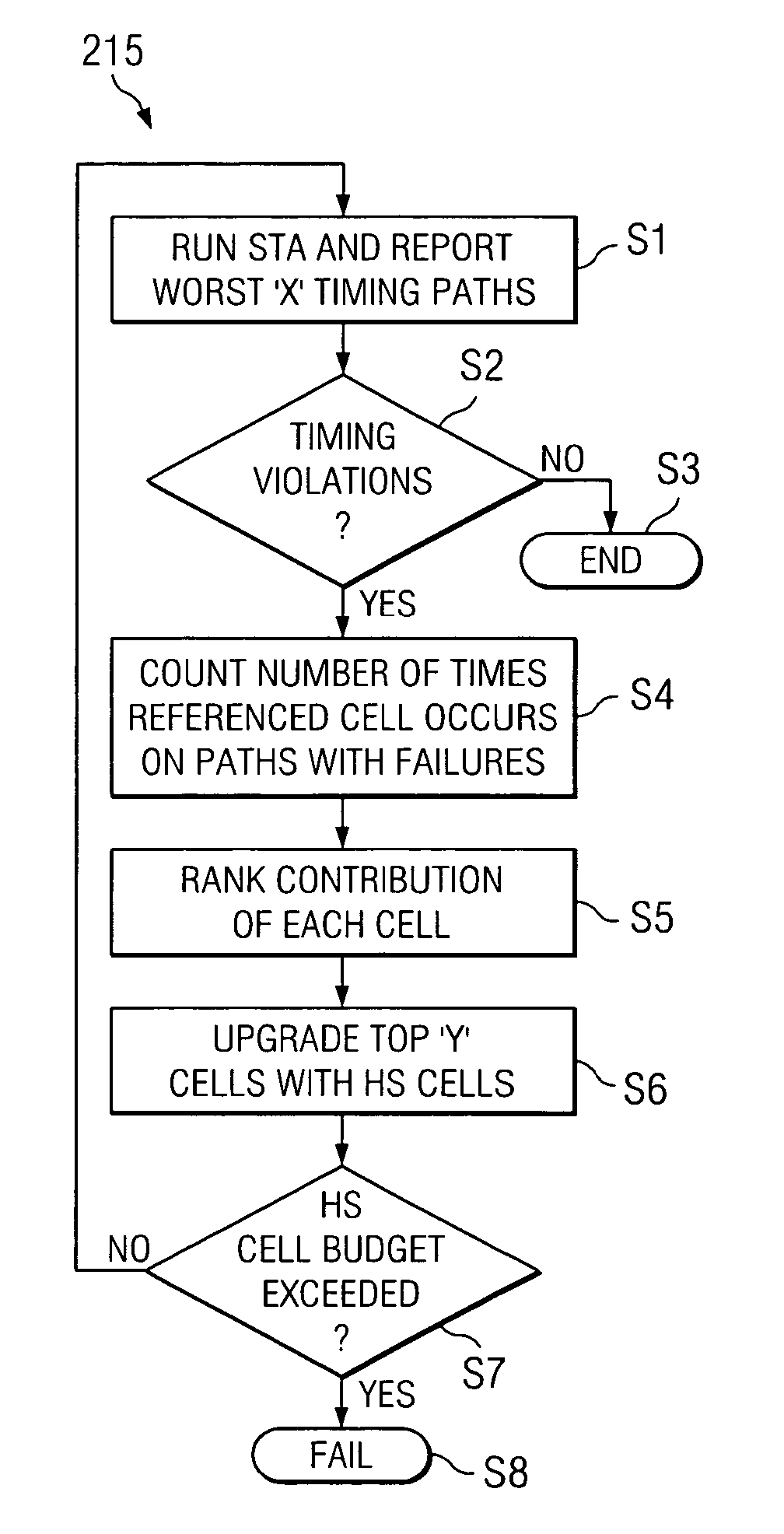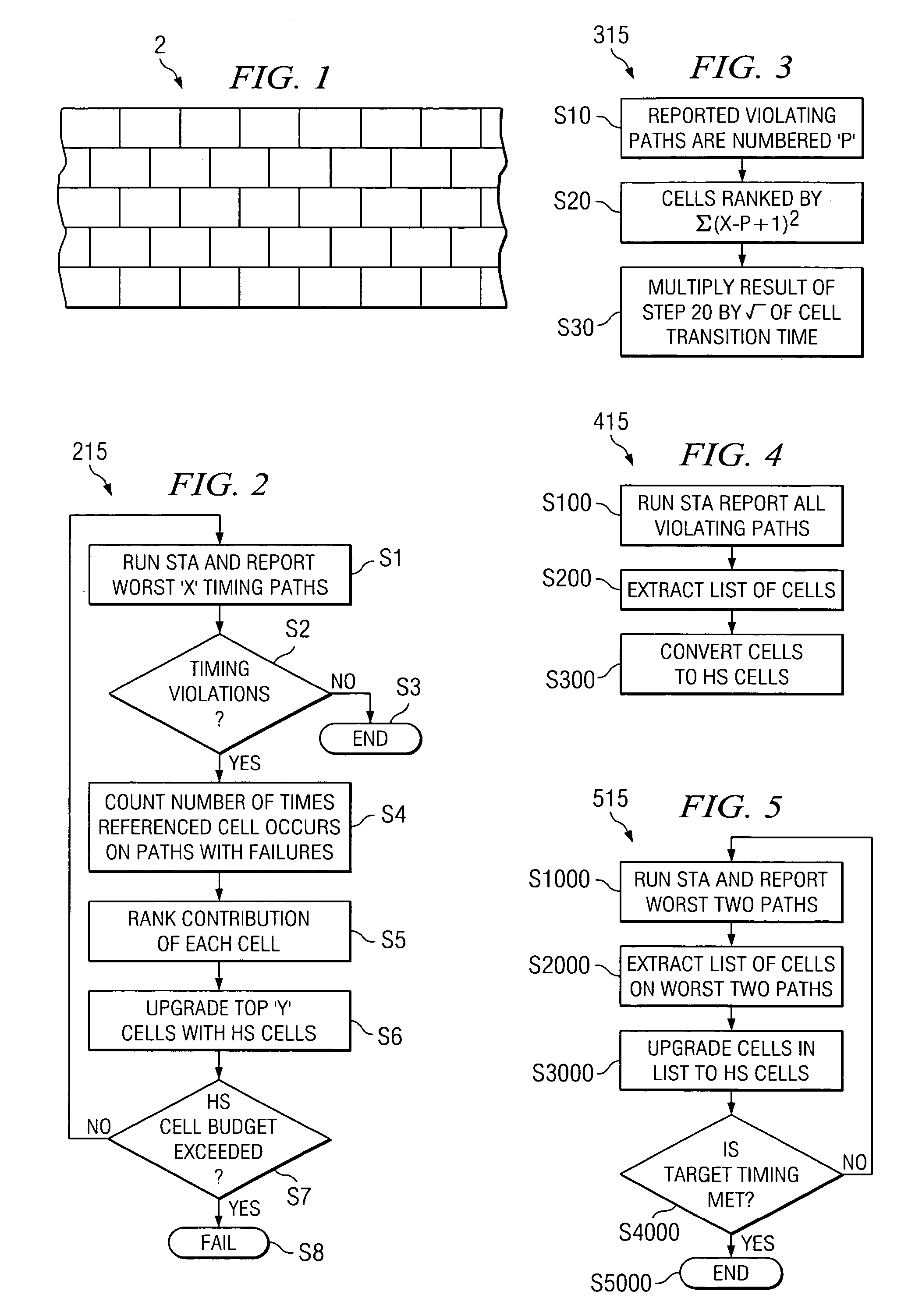Cell replacement algorithm
a cell replacement and algorithm technology, applied in the direction of specific program execution arrangements, program control, instruments, etc., can solve the problems of false impression of the true size of the design, synthesis tool construction is lower, and the cells consume more power, so as to achieve high speed.
- Summary
- Abstract
- Description
- Claims
- Application Information
AI Technical Summary
Benefits of technology
Problems solved by technology
Method used
Image
Examples
Embodiment Construction
[0021]Reference is first made to FIG. 1. FIG. 1 shows an application specific integrated circuit (ASIC) as a tiled array of cells (2). Each of the cells in the array are logic cells, that each perform a particular function. As described previously, a cell may either be a standard cell (LL), or a high speed cell (HS).
[0022]Wires (not shown) physically connect cells together to form a plurality, of paths. One cell may be common to a number of paths, whereas another cell may only be included in one path. Upgrading cells that are common to a number of paths to HS cells is desirable as this will provide a large performance gain with only a small increase in the power requirements of the circuit.
[0023]In preferred embodiments of the invention, for every LL cell in the library there is an equivalent HS cell with identical physical dimensions. Since the cells with equivalent functions are the same size, an LL cell may be replaced by an HS cell without altering the wiring between the cells o...
PUM
 Login to View More
Login to View More Abstract
Description
Claims
Application Information
 Login to View More
Login to View More - R&D
- Intellectual Property
- Life Sciences
- Materials
- Tech Scout
- Unparalleled Data Quality
- Higher Quality Content
- 60% Fewer Hallucinations
Browse by: Latest US Patents, China's latest patents, Technical Efficacy Thesaurus, Application Domain, Technology Topic, Popular Technical Reports.
© 2025 PatSnap. All rights reserved.Legal|Privacy policy|Modern Slavery Act Transparency Statement|Sitemap|About US| Contact US: help@patsnap.com



